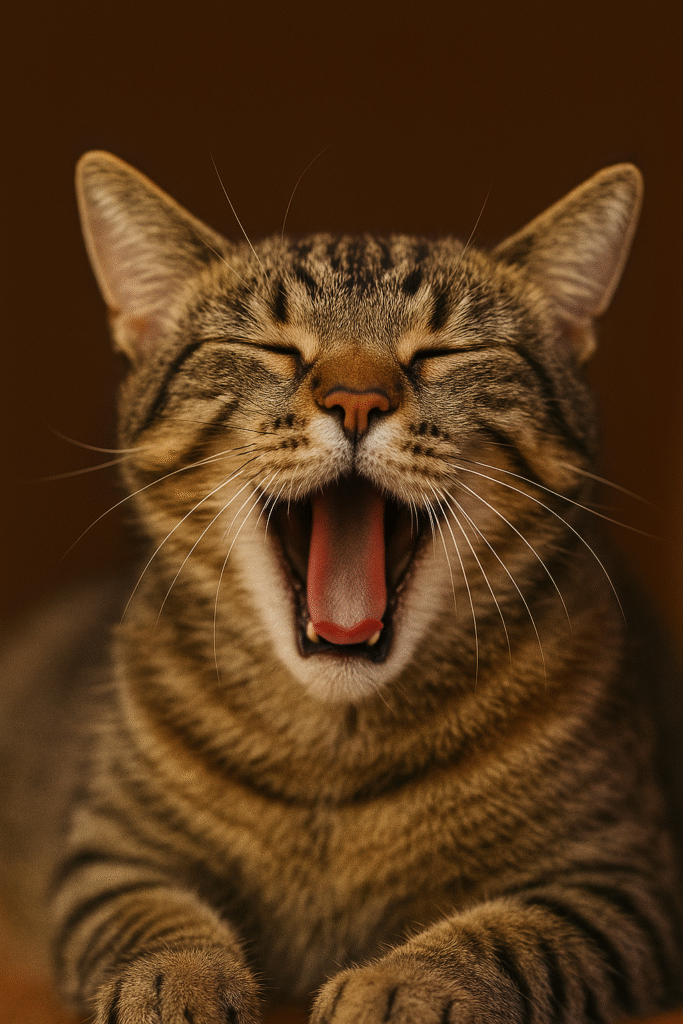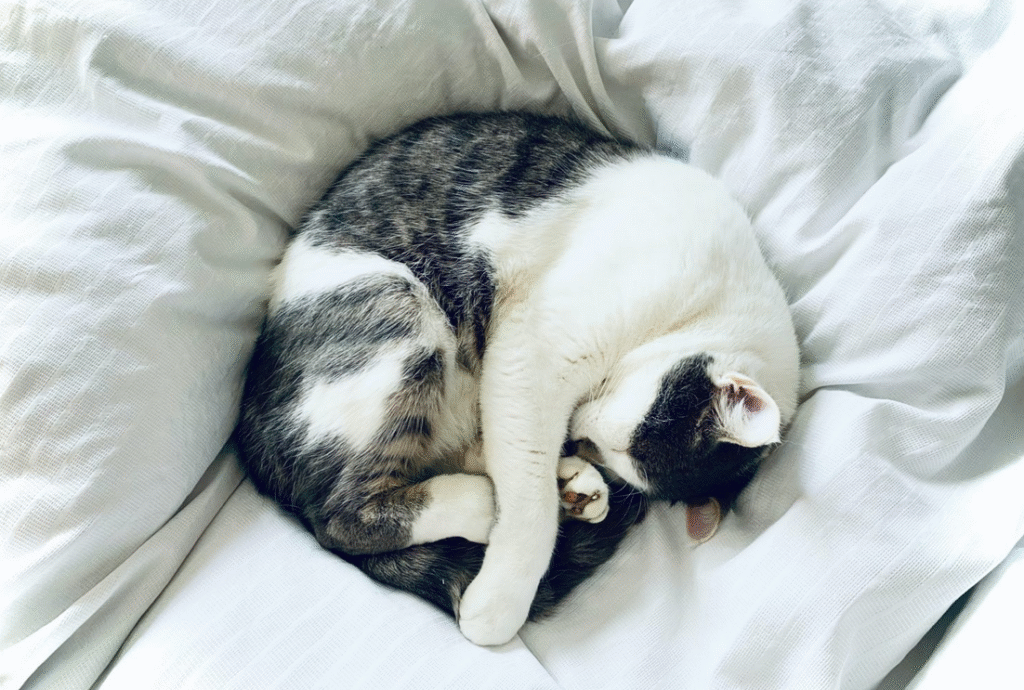Meta Description: Discover 10 surprising facts about cats that will amaze every cat lover! From their incredible abilities to fascinating behaviors, learn what makes your feline friend truly extraordinary.
Cats have been our beloved companions for thousands of years, yet these mysterious creatures continue to surprise us with their incredible abilities and fascinating behaviors. Whether you’re a lifelong cat parent or simply curious about our feline friends, prepare to be amazed by these remarkable cat facts that most people have never heard before.
From their superhuman-like senses to their quirky communication methods, cats are far more complex and interesting than many people realize. Let’s dive into the wonderful world of cats and uncover some truly mind-blowing secrets about these amazing animals.
1. Cats Can’t Taste Sweet Things (And Here’s Why)
Unlike dogs and humans, cats are completely unable to taste sweetness. This surprising cat fact is due to a genetic mutation that occurred millions of years ago, causing cats to lose the gene responsible for detecting sweet flavors. Scientists believe this happened because cats evolved as obligate carnivores, meaning they get all their nutritional needs from meat rather than plants or fruits.
This inability to taste sweetness actually serves an important purpose in keeping cats healthy, as it naturally prevents them from being attracted to sugary foods that could be harmful to their digestive systems. It also explains why your cat shows zero interest in that piece of cake you’re eating but goes crazy for a tiny bit of tuna!

2. Your Cat’s Purr Has Healing Powers (Literally!)
Here’s a cat fact that sounds like science fiction but is absolutely true: a cat’s purr can promote healing in both cats and humans. Cat purrs typically vibrate between 20-50 Hz, which falls within the frequency range that medical researchers have found to promote bone healing, reduce pain, and lower blood pressure.
Studies have shown that cat owners have a 40% lower risk of heart attack compared to non-pet owners, and the therapeutic vibrations of purring may play a significant role in this health benefit. Some veterinarians even refer to purring as “nature’s healing mechanism” because cats often purr when they’re injured or stressed, potentially helping their own recovery process.
This amazing ability makes cats not just wonderful companions but also natural therapy animals that can genuinely improve your physical and mental wellbeing.
3. Cats Have a “Third Eyelid” That Acts Like Nature’s Safety Goggles
One of the most fascinating cat facts involves their unique eye anatomy. Cats possess what’s called a nictitating membrane, or “third eyelid,” which is a translucent layer that slides across their eyes horizontally. This incredible feature acts like built-in protective goggles, shielding their eyes from debris, dust, and potential injuries during hunting or play.
Unlike humans who only have upper and lower eyelids, this third eyelid gives cats an extra layer of protection while still allowing them to see clearly. You might occasionally catch a glimpse of this pale, whitish membrane in the inner corner of your cat’s eye, especially when they’re sleepy or not feeling well.
4. Cats Have More Bones Than Humans
Prepare to be amazed by this skeletal cat fact: adult cats have 230-250 bones in their bodies, while humans only have 206! This extra bone count is primarily due to their incredibly flexible spines and long tails. A cat’s spine contains about 60 vertebrae (compared to humans’ 33), which gives them their legendary flexibility and agility.
These additional bones, combined with their unique shoulder blade attachment, allow cats to squeeze through any opening that’s larger than their skull. This is why cats seem to defy physics when they slip through impossibly small spaces – their skeletal structure is literally designed for maximum flexibility and maneuverability.
5. Cats Use 16 Different “Meow” Sounds to Communicate With Humans
Here’s a communication cat fact that will change how you listen to your feline friend: cats have developed at least 16 distinct meow vocalizations specifically for communicating with humans. Interestingly, adult cats rarely meow at each other – they primarily use body language, scent marking, and other subtle signals for cat-to-cat communication.
The meowing behavior we’re so familiar with is actually a learned communication method that cats developed specifically to “talk” to their human families. Each cat develops their own unique meow vocabulary, and many cat parents can distinguish between their cat’s different meows for “feed me,” “let me out,” “pay attention to me,” and various other requests.
This sophisticated communication system shows just how intelligent and adaptable cats are, developing a whole language just to better connect with us!

6. A Cat’s Whiskers Are Incredibly Sophisticated Sensory Tools
Cat whiskers aren’t just cute facial features – they’re actually highly sensitive sensory organs called vibrissae that can detect minute changes in air currents and vibrations. These specialized hairs are connected to the cat’s nervous system and provide crucial information about their environment, essentially acting like radar systems.
A cat’s whiskers are roughly as wide as their body, which helps them determine whether they can fit through tight spaces without getting stuck. They can also detect approaching objects in complete darkness by sensing changes in air flow, making whiskers essential for nighttime hunting and navigation.
Cats also have whiskers above their eyes, on their chins, and on the backs of their front legs, creating a comprehensive sensory network that gives them almost supernatural awareness of their surroundings.
7. Cats Sleep 12-16 Hours Per Day (And There’s a Smart Reason Why)
One of the most well-known cat facts is their love of sleeping, but did you know there’s an evolutionary reason behind their marathon napping sessions? Cats sleep 12-16 hours per day because they’re natural hunters whose wild ancestors needed to conserve energy for short bursts of intense hunting activity.
Unlike grazing animals that need to stay alert for predators while eating, cats evolved to sleep deeply and frequently, then wake up fully energized for hunting. This sleep pattern is so ingrained in their DNA that even well-fed house cats maintain these extensive sleeping schedules.
During their sleep, cats experience similar REM cycles to humans and likely dream about hunting, playing, and their daily activities. Those little twitches and movements you see while your cat sleeps? They’re probably dreaming about catching that red laser dot!

8. Cats Have a Built-in GPS System in Their Inner Ear
Perhaps one of the most remarkable cat facts involves their incredible ability to find their way home from great distances. Cats possess iron-rich cells in their inner ears that function like a biological compass, allowing them to navigate using Earth’s magnetic field.
This natural GPS system, combined with their excellent memory and keen senses, enables cats to travel impressive distances to return home. There are documented cases of cats finding their way back to their families from hundreds of miles away, sometimes taking months to complete these incredible journeys.
This magnetic sense also helps explain why cats are such excellent hunters and why they seem to always land on their feet – they have an intrinsic understanding of spatial orientation that goes far beyond what humans can perceive.
9. Cats Can Rotate Their Ears 180 Degrees
Cat ears are engineering marvels that can rotate a full 180 degrees, thanks to over 30 muscles controlling each ear. This incredible range of motion allows cats to pinpoint the exact location of sounds with remarkable precision, even while the rest of their body remains perfectly still.
A cat’s hearing is so acute that they can detect frequencies up to 64,000 Hz (compared to humans’ 20,000 Hz limit), making them capable of hearing sounds that are completely inaudible to us. This super-hearing ability was crucial for their ancestors who needed to detect the high-pitched squeaks of small prey like mice and birds.
The independent movement of each ear also means cats can simultaneously monitor sounds coming from different directions, giving them a significant advantage in both hunting and avoiding potential dangers.
10. Ancient Egyptians Believed Cats Were Sacred Gods (And Cats Never Forgot)
Our final fascinating cat fact takes us back in time to ancient Egypt, where cats were literally worshipped as sacred beings. The ancient Egyptians believed cats were magical creatures that could bring good fortune and protect against evil spirits. They even had a cat goddess named Bastet who was associated with protection, fertility, and motherhood.
When a family cat died in ancient Egypt, the entire household would go into mourning, shaving off their eyebrows as a sign of grief. Cats were often mummified and buried with treasures, just like human royalty. Killing a cat, even accidentally, was punishable by death.
This reverence for cats spread throughout many cultures and may explain why cats often seem to carry themselves with such dignity and confidence – perhaps they really do remember their days as gods!
Conclusion: The Endless Wonder of Our Feline Friends
These incredible cat facts only scratch the surface of what makes our feline companions so extraordinary. From their healing purrs to their magnetic navigation systems, cats continue to amaze scientists and pet lovers alike with their remarkable abilities and fascinating behaviors.
Understanding these amazing qualities can help us better appreciate our cats and provide them with the care and respect they deserve. Whether you’re considering adopting a cat or you’re already a devoted cat parent, these insights into feline biology and behavior reveal just how special these animals truly are.
The next time you watch your cat effortlessly leap onto a high shelf, navigate in complete darkness, or curl up for another marathon napping session, you’ll know you’re witnessing millions of years of evolutionary perfection in action.
What amazing cat behavior have you observed in your own feline friend? Share your cat stories in the comments below!
Ready to give your cat the best care possible? Check out our recommendations for premium cat food, interactive toys, and comfortable beds that will keep your feline friend happy and healthy.
Related Articles You Might Enjoy:
- “Understanding Cat Body Language: What Your Cat Is Really Telling You”
- “The Complete Guide to Cat-Proofing Your Home”
- “Why Do Cats Knead? The Science Behind This Adorable Behavior”
Keywords: cat facts, fun facts about cats, cat behavior, feline facts, cat abilities, pet care, cat owners, interesting cat information, cat science, amazing cats

